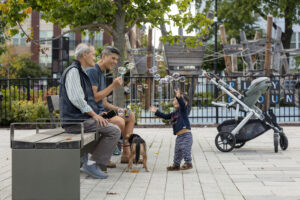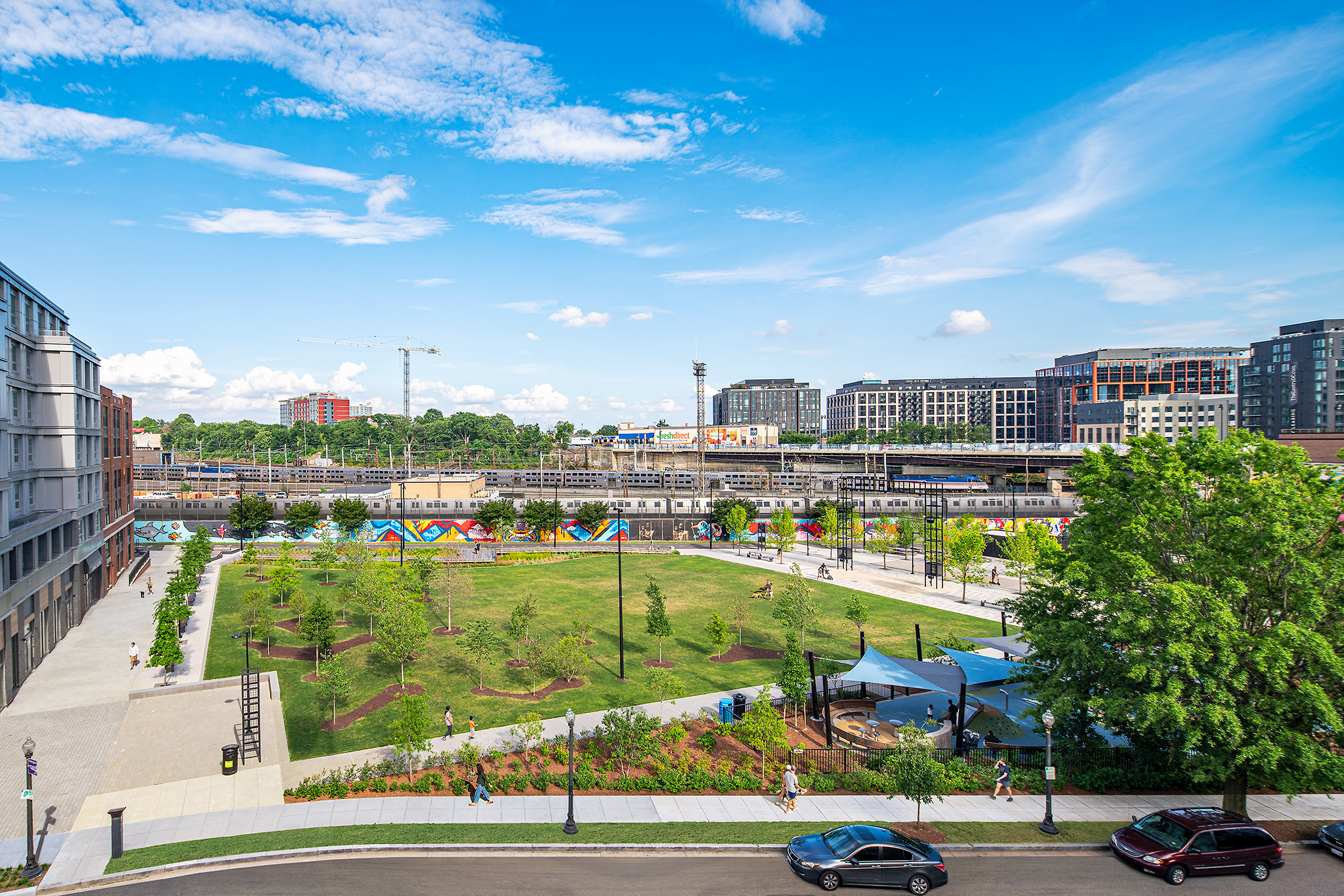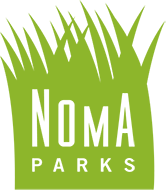
Foundational Elements
Successfully addressing the long-term parks and open space needs required three critical elements to converge: a unifying vision and plan, an aligned organization, and significant funding. In 2012 all three converged with the completion of the NoMa Public Realm Design Plan, establishment of NoMa Parks Foundation, and provision of initial grant funding from the D.C. government that led to a $50 million allocation in Mayor Gray’s capital budget the following year.
NOMA PUBLIC REALM DESIGN PLAN
In 2012, the NoMa BID hired AECOM to work with stakeholders to develop the NoMa Public Realm Design Plan. Development of this plan first had to confront its most formidable obstacles: no viable sites existed, the cost of purchasing privately owned land was high and getting higher, and there were few, if any, willing sellers. Working closely with community stakeholders, AECOM developed a programmatic approach to creating a thriving, connected community. That approach envisioned an array of park spaces that included outdoor fitness facilities, dog parks, public art installations, chairs and tables, bike racks, and tree-lined plazas.
The NoMa Public Realm Design Plan adopted the following principles:
- Focus on enhancing public property first. Integrate new public space with adjacent private development.
- Design streetscapes to function as linear parks.
- Provide scalable gathering spaces to support a variety of events.
- Create signature spaces that become community focal points.
- Establish a series of park spaces throughout NoMa.
- Create streetscapes that are unified in appearance but not uniform.
- Optimize pedestrian and bicycle convenience and comfort.
- Incorporate low-impact development-runoff management.
- Create interactive artistic experiences.
- Embrace historical elements and incorporate the railroad influence.
- Accommodate the needs of families with children.
This flexible framework for the development of parks and public spaces was the guiding star of the NoMa Parks Project, and the significant community engagement undertaken to develop the Plan set the tone for an ongoing partnership with residents.

NOMA PARKS FOUNDATION ESTABLISHMENT
In 2012, NoMa BID leadership created the NoMa Parks Foundation to coordinate the public and private sectors to develop and build the system of parks and accessible public spaces envisioned in the NoMa Public Realm Design Plan. NPF was charged with engaging and consulting with community stakeholders, identifying funding sources, negotiating with property owners, developing designs, obtaining regulatory approvals, and, ultimately, constructing parks and public spaces. The Foundation’s board included a group of senior professionals with deep subject matter expertise.
The NoMa BID provided administrative staffing and services for NPF, for which it was reimbursed, to promote efficiency and reduce administrative costs.
NPF was able to leverage the BID’s community connections, knowledge of community conditions, and future development plans, relationships with developers, and experience with public agencies. Equally important was the BID’s experience with temporary urbanism and the ability to pilot ideas and approaches.
DISTRICT FUNDING AND AUTHORIZING OF NPF INITIATIVE
The NoMa BID, residents, and other stakeholders aligned around the goals of the NoMa Public Realm Design Plan along with the newly created NoMa Parks Foundation to make a case to the District government for the funding required to realize the vision for public and open spaces in the neighborhood. In March 2013, Mayor Gray included $50 million in capital funding for NoMa parks and public spaces in his proposed FY 2014 capital budget. These funds were allocated from FY 2014 to FY 2019 for the purpose of improving the recreational opportunities for residents of the NoMa community by acquiring property and developing public parks. The NoMa Parks Grant Authorization Act of 2013 adopted the NoMa Public Realm Design Plan as the framework for the District’s investment in parks in NoMa and provided the legal authority for implementing NoMa parks development.
NoMa Parks Foundation © 2025


